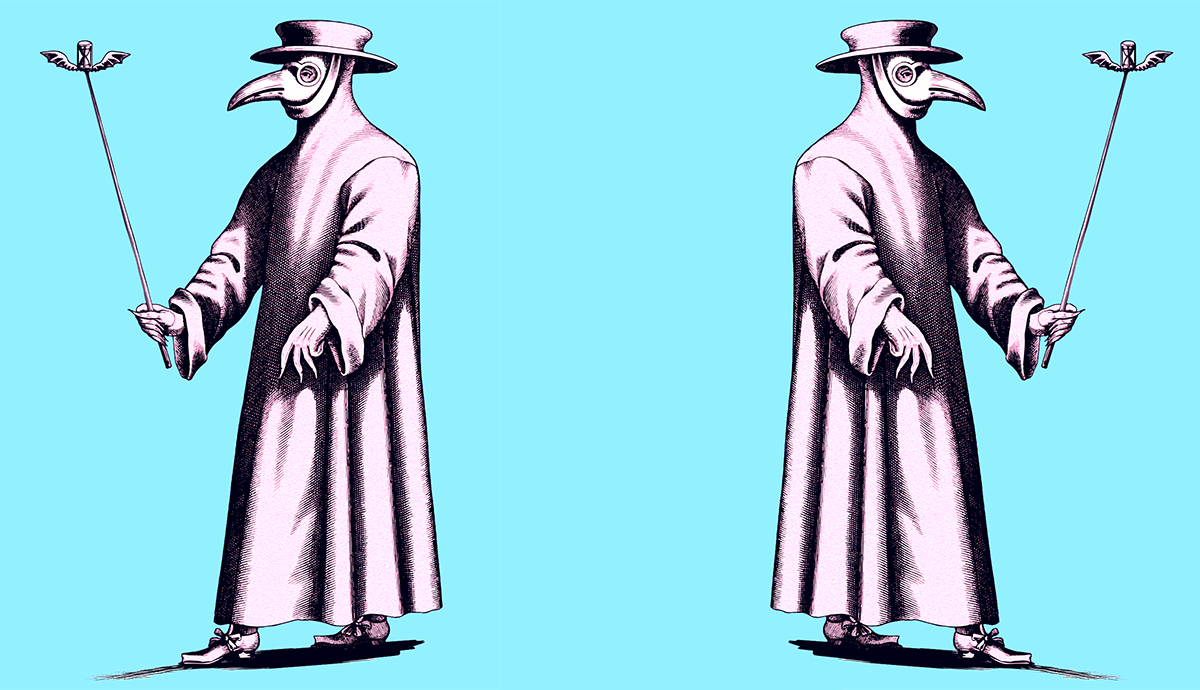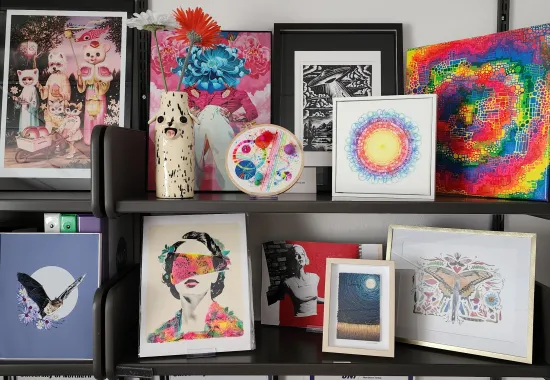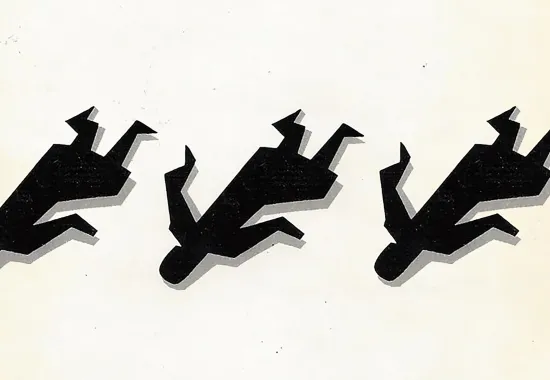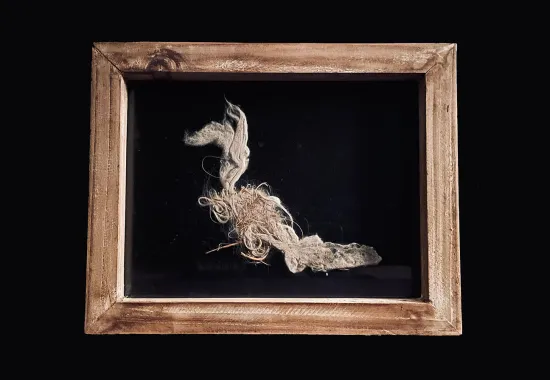What Laughter in the Face of Death is not Bitter?
I joked with some friends that, given the coronavirus pandemic taking hold of the world this spring, I’d decided to lighten my mood by rereading Daniel Defoe’s A Journal of the Plague Year. Not the most sensitive jest, but I’ve always believed laughing beats crying, even if the laughter has a bitter taste.
My copy of Defoe’s book is a 60-cent Signet Classics paperback, printed in 1960—when it seemed that as many words as possible were crammed on a page, unlike the airily-spaced lines in most modern volumes. Was paper then more expensive than ink? All that type seems to give the book a real weight. A somber gravity. On the cover is a drawing of a hooded figure whose head and lower face are shrouded in red cloth and whose dark eyes appear to stare at the reader.
Defoe’s tale of course is anything but humorous. A grim account of 1665, the Year of the Great Plague, he wrote it to warn the public of the threat of the Black Plague in 1721. His main character is a saddler who stays in London as the crowd flees. Recording the progress of the plague, he begins with uneasy stirrings and rumors, then recounts how the world around him is changed utterly by the fear and spread of the pestilence.
Absorbed in the growing gloom of this narrative, I ran into the line that became the epigraph for my poem, “An Ill Time”: “It was a very ill time to be sick in.” Wow—was Defoe not aware of the pun embedded in the phrase? Had he slipped in a glimmer of humor to contrast with the dismal landscape? While I wanted to believe that, and though it appeared quite early (page 22), I never ran into anything else like it in the book. The closest rival was on page 83: “…[A] great many that went thither [to market] sound brought death home with them.” Which, while poetic, is devoid of any humor but the barest dark bite of it.
A touch of the comic occurs as he describes how people figure out ways to avoid quarantine, particularly in dodging the watchmen stationed in front of their houses by climbing out their back windows. By risking this, of course, the joke could ultimately be on them, but people—then as now—always seem convinced they personally will never face dire consequences, no matter how many others fall.
I’d also been reading some Yeats, and I stole from him the stanza form for the poem: sestets in iambic pentameter, rhymed ababcc. This “forced” regularity I thought contrasted well with the idea of the unraveling chaos of a pandemic—as if it could be contained by such stricture.
The more I thought of the figure on the cover, the more ominous it felt. An element of Edgar Allan Poe’s The Masque of the Red Death hovered around it, especially given what I took to be the cold quality of its stare. It appeared less to be one poor soul trying to survive and more a bringer of doom.
The eyes seemed hard to me, like pearls, the eyelids holding them like partly pried-opened shells. People in distress search each other’s eyes for signs of warmth or pity. They would find none in the dark eyes of this figure.
Recommended
A Behind the Scenes Look at Art Selection and Cover Design for the NAR
“Doubling and the Intelligent Mistake in Georges Simenon’s Maigret’s Madwoman”
What the Birds Showed My Wounded Child, My Adaptive Adolescent, & My Wise Adult






